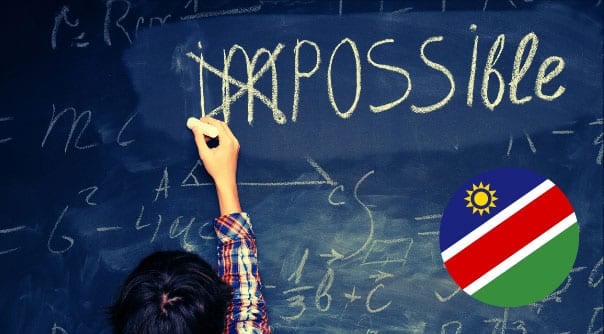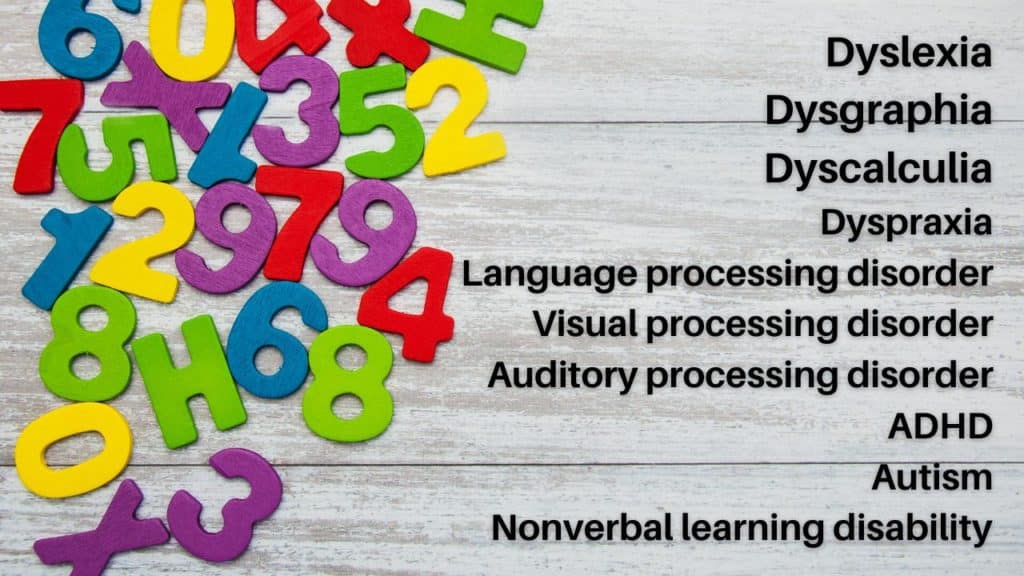
For as long as there have been schools, there have been children who have struggled to learn.
In the past, children who failed at school were often considered lazy, uninterested, or unintelligent. Unfortunately, this incorrect assumption has had devastating consequences. Fortunately, today we know that just because a child struggles at school doesn’t mean they aren’t interested, persistent, and capable. Instead, they may have a learning disability that requires treatment.
Learning disabilities can significantly hamper learning abilities. People with learning disabilities may have trouble speaking, reading, writing, paying attention, understanding information, remembering things, performing mathematical calculations, or coordinating movements.
Below are common types of learning disabilities and pointers on how to help. While ADHD and autism are not learning disabilities per se, these conditions are included because they can negatively impact learning.
(1.) Dyslexia
Reading is the skill by which students get information from books, computers, worksheets, and boards to learn math, science, literature, social studies, and more. As much as 85% of the curriculum is taught by reading.
Most children look forward to learning to read, a process whereby they transform what are essentially abstract squiggles on a page into meaningful letters, sounds, words, and entire sentences and paragraphs. For at least one in five children, however, the experience is very different. They may need help with word decoding, word recognition, or reading comprehension, and those who are not reading on grade level by the end of third grade struggle in every class, year after year.
Dyslexia is a reading disability and refers to persons for whom reading appears beyond their grasp. According to the Diagnostic and Statistical Manual (5th edition), dyslexia is a specific learning disability not caused by any profound sensory, neurological and intellectual disorders or socio-cultural factors.
Dyslexia has been recognized as a discrete learning disability for many decades. Some dyslexia experts maintain that the term should be reserved only for people who experience difficulty with reading. Other experts argue that dyslexia describes a broad set of neurological differences that impact various capacities, including listening, speaking, reading, writing, sequencing, and remembering. All dyslexia experts agree that dyslexia accounts for why some children have more difficulty learning to read than their peers.
(2.) Dysgraphia
Proficiency in writing is essential if students are to accomplish an acceptable amount of work in the classroom and meet the standards of the teacher and curriculum. On average, writing tasks occupy up to half of the school day (Amundson & Weil, 1996). In addition, writing has been linked to overall academic achievement (Cahill, 2009).
Writing develops along a similar trajectory to reading, where a child moves from basic skills, like recognizing letters, to sophisticated skills, like comprehending. At an early age, a child begins to understand how to form individual letters, spell simple words, and string together words to express thoughts. A breakdown in any of these areas can translate into a writing disability — or dysgraphia.
Children with dysgraphia struggle with most aspects of writing, including problems with letter formation/legibility, letter spacing, spelling, fine motor coordination, writing rate, grammar, and composition.
(3.) Dyscalculia
Math literacy is essential for survival in modern society. Everyday tasks such as paying bills or budgeting for daily expenses all have to do with numbers. Every job, from the rocket scientist to the sheepherder, requires math.
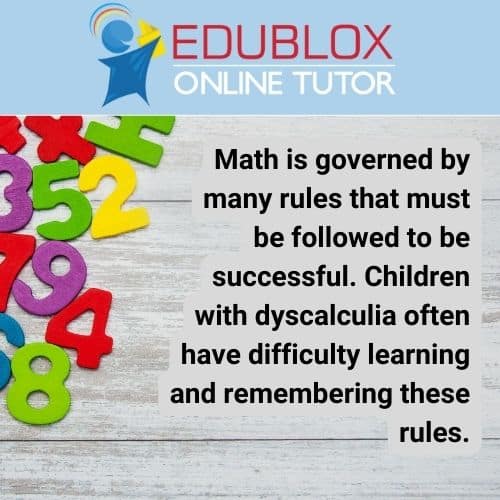
Dyscalculia is a math learning disability similar to dyslexia and dysgraphia. Children with dyscalculia have difficulty with math at a fundamental level, such as counting, recognizing numbers, forming numbers, understanding money, and telling time. Older children unable to perform basic mathematics such as adding, subtracting, multiplying, and dividing can also have dyscalculia.
Like written language, math is governed by many rules that must be followed to be successful. Children with dyscalculia often have difficulty learning and remembering these rules; therefore, they require considerably more direct instruction to achieve competency in math.
Dyscalculia and dyslexia frequently occur together, which means that children with dyscalculia are also likely to have difficulty understanding written directions, examples, and word problems. In addition, many children with dyscalculia also develop math anxiety, which diminishes their ability to learn and perform math-related tasks.
(4.) Dyspraxia
Dyspraxia, formally known as developmental coordination disorder (DCD), is a brain-based motor disorder affecting fine and gross motor skills, planning, and coordination. Although it can affect cognitive skills, it is not related to intelligence.
Early developmental milestones of crawling, walking, self-feeding, and dressing may be delayed in young children with dyspraxia. As they grow older, drawing, writing, and performing in sports are also usually behind what is expected for their age. Dyspraxia is thought to be around 3 or 4 times more common in boys than girls, and the condition sometimes runs in families.
(5.) Language processing disorder
A language processing disorder (LPD) is an impairment that negatively affects communication through spoken language. There are two types of LPD: expressive language disorder and receptive language disorder.
Expressive language disorder is a condition in which a child has lower than average ability in vocabulary, saying complex sentences, and remembering words. However, a child with this disorder may have the language skills needed to understand verbal or written communication.
Children with receptive language disorder have trouble understanding language. They have difficulty grasping the meaning of words they hear and see, including people talking to them and words they read in books or on signs.
(6.) Visual processing disorder
Visual processing — or perceptual — disorder refers to a hindered ability to make sense of information taken in through the eyes. This is different from problems involving sight or sharpness of vision. Difficulties with visual processing affect how the brain interprets or processes visual information.
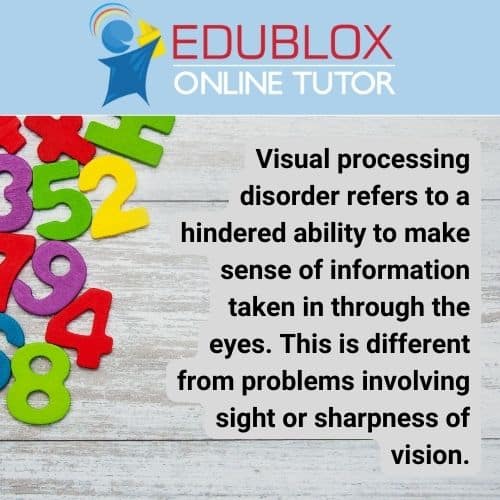
Below are examples of visual processing skills required for learning:
- Visual figure-ground discrimination allows the child to separate foreground from background to attend to the relevant details. It enables the child to focus quickly on the most important aspects of the visual image while retaining an awareness of the relationships of parts to the whole image.
- Form discrimination: Whether it be the differentiation of the shape of a circle from a square, or the letter B from P, the ability to perceive the shapes of objects and pictures is an essential skill for the developing child to acquire. There is hardly an academic activity that does not require the child to engage in form discrimination.
- Visual-spatial processing refers to the child’s ability to recognize the orientation and position of objects, as well as the orientation of self to the environment. It allows the child to recognize left from right, up from down, and top from bottom. A child with a spatial problem may find it difficult to distinguish letters like b, d, p, and q.
- Synthesis and analysis: Synthesis refers to the ability to perceive individual parts as a whole, while analysis refers to perceiving the whole in its individual parts. Synthesis plays a vital role in reading, while analysis is particularly important in spelling.
- Visual closure is recognizing forms or objects that are missing parts or incompletely presented. This skill allows the child to quickly recognize an object by mentally completing the visual image or by relating the image to previously stored information.
- Visual memory is often considered a subset of visual perception rather than a separate skill. Visual memory involves storing and retrieving previously experienced visual sensations and perceptions when the stimuli that initially evoked them are no longer present.
(7.) Auditory processing disorder
Auditory processing is identifying, interpreting, and attaching meaning to sound. Children with auditory processing deficits can hear sounds but cannot recognize them for meaning. Auditory processing plays as important a role as visual processing in reading.
Problems in auditory processing are presented under the following components:
- Auditory foreground-background differentiation refers to selecting and attending to relevant auditory stimuli and ignoring the irrelevant. The child who has difficulty in this area cannot differentiate. As a consequence, everything heard is treated equally. Thus, the teacher’s voice is lost in the background noises of other children’s whispers, the voices in the corridor, or the traffic sound coming from the street.
- Auditory discrimination refers to the ability to hear similarities and differences between sounds. The child with a problem in this area cannot identify gross differences between a siren and a school bell or phonemic differences between words like /pen/ and /pin/, or /big/ and /pig/.
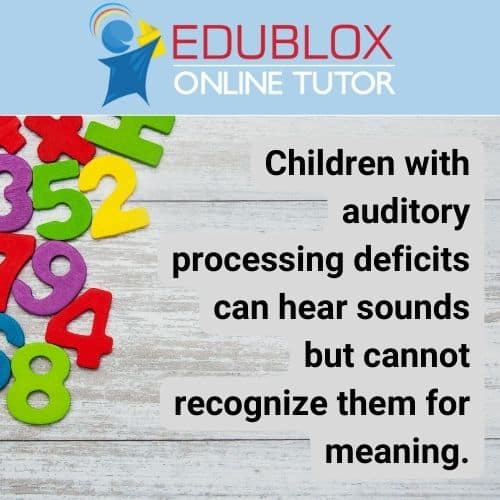
- Auditory blending: Also referred to as auditory analysis and synthesis, this is the ability to synthesize individual sounds that form words. The child who manifests difficulty in this area cannot blend the individual sounds in a word, such as /c-a-t/. The child may know the individual phonemes but cannot put them together. Similarly, the child may have problems separating an unknown word by syllables and blending it, such as /te-le-phone/.
- Auditory sequencing refers to remembering the order of individual sounds in a given stimulus. The child who has problems in this area cannot recite the alphabet or numbers or recall or carry out orally given directions in the order in which they were presented.
Characteristically, the child with auditory processing problems (1) may seem to ignore verbal directions; (2) may appear to daydream; (3) ask for repetitions of directions or often say “what?”, “huh?”; (4) watches everyone else to see what they are doing before following directions; (5) may have poor speech patterns; (6) may be monosyllabic or may not volunteer information; (7) may tend to gesture a lot; and (8) usually prefers visual tasks.
(8.) ADHD
A short attention span, periods of high activity, and impulsive behavior are part of childhood. However, for a child with attention deficit hyperactivity disorder (ADHD), these symptoms become exaggerated and begin to interfere with daily life. As a result, children with ADHD often struggle at school because they cannot concentrate, solve problems and focus on prescribed tasks.
ADHD is not a learning disability. However, some of the symptoms may appear very similar to those of a learning disability. Rates of learning disorders are also higher among children with ADHD, while children with learning disorders are more likely to have an ADHD diagnosis.
(9.) Autism
Autism, sometimes referred to as autism spectrum disorder (ASD), is a developmental disability that significantly affects verbal and nonverbal communication and social interaction. Other characteristics include:
- Engagement in repetitive activities.
- Resistance to environmental change or change in daily routines.
- Unusual responses to sensory experiences.
Like ADHD, autism is not a learning disability, but around half of people with autism may also have a learning disability.
(10.) Nonverbal learning disability
Nonverbal learning is the ability to process and understand information other than verbal and written forms; it involves understanding ideas, patterns, concepts, and relationships and applying them to new situations.
People with nonverbal learning disabilities (NVLD) typically do not have difficulty in areas such as reading, decoding language, spelling, vocabulary, or factual recall; however, they may have trouble with visual, spatial, or tactile processing.
Children with NVLD may have trouble processing visual imagery. For instance, if they are asked to copy a shape, such as a square or a triangle, they may draw something entirely different and disproportionate. They commonly report problems with spatial awareness, like bumping into objects, and difficulties with motor skills and coordination, like throwing a ball and running.
A child with NVLD may have trouble with higher-order comprehension, making it hard for them to understand the salient points of their reading. In addition, they may struggle to read nonverbal communication cues, such as facial expressions and body language.
NVLD is not recognized as an official diagnosis. Children who display symptoms of this condition are typically diagnosed with other conditions, such as ADHD, autism, and anxiety.
How to help kids with learning disabilities
When you have the right tools, any task will be accomplished with greater ease and efficiency. Imagine, for example, trying to mix cement with a spoon rather than a cement mixer. Imagine trying to mow the lawn with a pair of scissors!
Cognitive skills are mental skills used in the process of acquiring knowledge and can be considered your child’s tools for learning. Cognitive skills include:
- focused, sustained, and divided attention
- visual and auditory processing; and processing speed
- visual and auditory memory; short-term, long-term, and working memory
- logical reasoning
What all types of learning disabilities have in common are weak cognitive skills. The great news, however, is that these weaknesses can be attacked head-on. Cognitive skills can be improved, strengthened, and enhanced through dynamic training and practice.
Edublox specializes in cognitive training and educational interventions that make children smarter, help them learn and read faster, and do math with ease. Our programs enable learners to overcome reading difficulties and other learning obstacles, assisting them to become life-long learners and empowering them to realize their highest educational goals.
Watch this playlist of customer reviews and experience how Edublox training and tutoring help turn dyslexia and dyscalculia around. Book a free consultation to discuss your child’s learning needs.
Besides cognitive training, treatments for ADHD include medication, dietary changes, and neurofeedback.
Although there is no cure for dyspraxia, occupational therapy can help find practical ways to manage everyday tasks such as writing. No cure exists for autism spectrum disorder either, and there is no one-size-fits-all treatment. The goal of treatment is to maximize your child’s ability to function by reducing autism spectrum disorder symptoms and supporting development and learning. Early intervention during the preschool years can help your child learn critical social, communication, functional, and behavioral skills.
Children with autism spectrum disorder typically continue to learn and compensate for problems throughout life, but most will continue to require some level of support. Planning for your child’s future opportunities, such as employment, college, living situation, independence, and the services needed, can make this process smoother.
.


